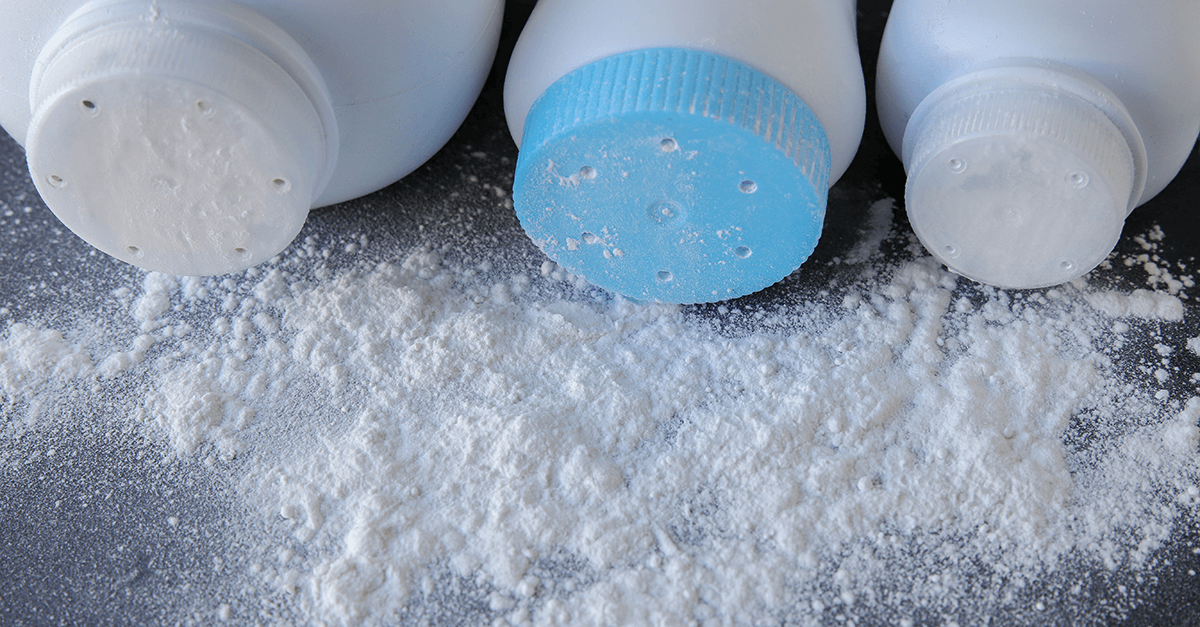Partner James Kramer weighs in on talc litigation during Perrin webinar

Talcum powder and other talc-based products sit at the heart of over 9,000 lawsuits currently awaiting trial. But how did it get to this point?

Simmons Hanly Conroy Partner James “Jim” Kramer joined several consultants and attorneys on a recent webinar hosted by Perrin Conferences to educate listeners on cosmetic talc litigation as it currently stands in the United States.
Jim was invited to speak about the developing trends as a trial attorney who has, in fact, litigated several talc cases, including the landmark 2017 case of Nemeth v. Whittaker Clark & Daniels, which was recently affirmed on appeal by the New York Appellate Division.
The Progression of Talc Litigation
It was only a short seven years ago, in 2013, when the first talcum powder verdict was awarded to a plaintiff who tied use of the cosmetic powder to their development of ovarian cancer.
Since then, over $5 billion has been awarded to ovarian cancer plaintiffs in talc litigation.
As webinar host Michelle Potter of KCIC and Jim discussed, a trend has emerged in talc litigation — one that sees talc allegations cropping up in traditional asbestos complaints.
This trend, which began in 2016, has seen a 10-percent year-by-year increase as more American consumers file non-ovarian-cancer complaints alleging that tainted talc is the cause of their lung cancer or mesothelioma.
Such cases linking lung cancer to talc exposure now comprise roughly 33 percent of all non-ovarian cancer talc lawsuits.
Three Key Developments in Talc Litigation
Kramer identified for listeners three talc-litigation developments to keep an eye on in 2020 alone, including:
- Amount of Talc Exposure Needed to Show Causation: In the case of Nemeth v. Whittaker Clark & Daniels, the appellate court determined that it is not always necessary to quantify the exact amount of asbestos present in talc, only that there was a sufficient level of exposure — enough to contribute to the disease’s development.
- Talc Defendants Rely on ‘Mucking Up’ the Findings: A typical defense seen in talc lawsuits against Johnson & Johnson (J&J), the makers of Johnson’s Baby Powder®, is to discredit the asbestos testing methods — and thus the findings — used by medical-expert witnesses to prove the presence of asbestos in talc.
- Permissible Asbestos Testing Methods Identified: In a multidistrict litigation (MDL) hearing centralized under Judge Freda Wolfson in New Jersey, J&J was denied its motion to preclude plaintiff expert testimony due to alleged improper testing methods. Judge Wolfson determined that the plaintiff’s expert’s methodologies were largely reliable, and thus will allow him to testify at trial about his findings using a Transmission Electron Microscope that J&J’s talc products contained asbestos.
As talc litigation continues, new trends are sure to emerge in addition to the three recent and noteworthy developments Jim identified.
Cosmetic Talc Cases Are Unfolding ‘As We Speak’
While traditional asbestos lawsuits overlap in several ways with the new wave of talc lawsuits alleging asbestos exposure, there remain a number of differences, including the mainstay quality and widespread presence of baby powder in American and global commerce.
Of talc itself, Jim said,
“What’s so unique about the cosmetic talc litigation is that not only are many of these products still on the market — still on store shelves today — so much about what’s understood of some aspects of the science — and definitely in the legal landscape — is kind of unfolding in real-time through these cases that are being litigated as we speak.”
While many talc products are still on store shelves, asbestos consumption, by comparison, has sharply decreased since the 1980s, though it still remains legal to use in the United States today.
One product that will no longer appear on consumer shelves, however, is J&J’s Baby Powder. The company announced just this week – and just two weeks after the landmark decision in the MDL ovarian talc cases allowing plaintiffs’ expert to testify regarding his findings – that they will exhaust its existing supplies of the product in the United States and Canada, after which it will only sell the cornstarch variant.
The differences between traditional asbestos litigation and the new wave of talc litigation are many, but the goal remains the same: to fight for those who were wrongly injured. Consumers who allege a connection between their use of talc and the development of a disease should have been warned of the risks before using such a product.
In Kramer’s words: “There were no warnings about any type of asbestos contamination on any of the cosmetics products involved in these cases, ever. Even including today.”




